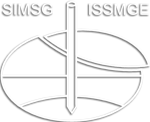Understanding soil contamination by leachate from landfills
Understanding soil contamination by leachate from landfills
One of the major environmental problems nowadays is the contamination of soils and groundwater. Although landfilling has appeared as the simplest and most economical method to eliminate municipal solid waste, but in many developing countries like Lebanon and with the absence of solid waste management plans, open dumps, uncontrolled landfills and open burning are sadly predominant. Wastewater leachate collected from these dumps is very toxic; it shows for example high concentration of Pb (0.024 ppm), Cd (11.5 ppm), As (1.648 ppm) and Hg (0.1076 ppm). The main purpose of this paper is to study the fate and transport of leachate contaminant through different soil matrix and to demonstrate the effect of soil properties in contaminant movement, its spatial distribution and concentration. The behavior of contaminant is tested for different hydraulic conductivities of soil and in the absence or presence of a bottom clay liner. Analysis of the contaminant transport from a dumpsite located near a riverbed in Lebanon is carried out using SEEP/W and CTRAN/W. The results confirm that the contaminant transport is largely affected by the hydraulic conductivity of soil; in the case of lower hydraulic conductivity, time taken by contaminants to reach the riverbed will increase about seven times. Also, the results prove the importance of installation of a clay liner at the bottom of landfills as it retards the migration of contaminants.
R. Jammoul; Muhsin Elie Rahhal
9th International Congress on Environmental Geotechnics (ICEG2023)
Contaminant Fate and Transport
https://doi.org/10.53243/ICEG2023-332
